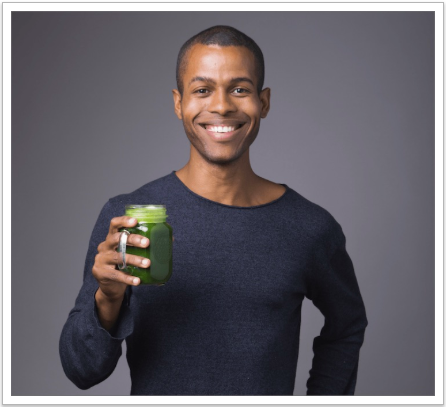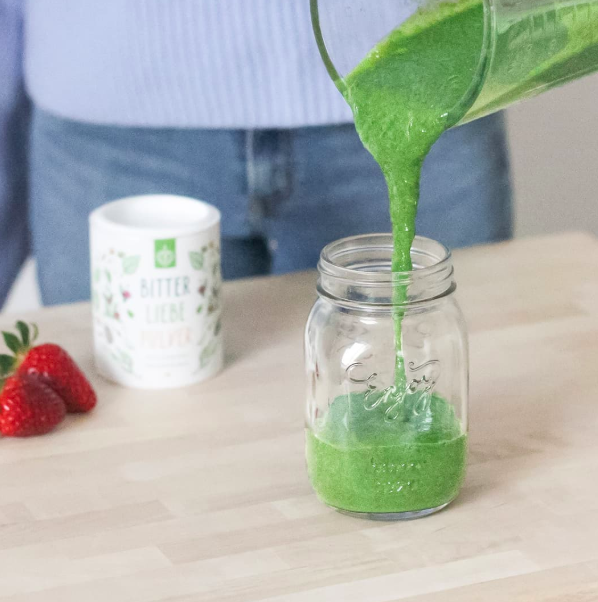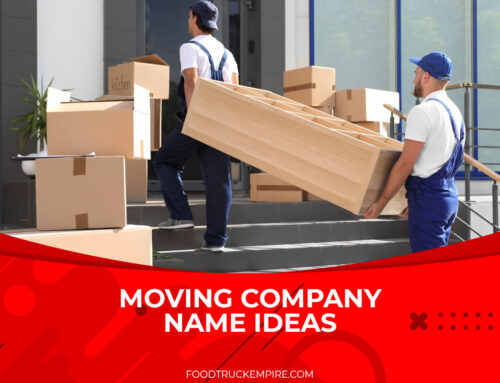The popularity of smoothies has benefited greatly from the healthy lifestyle mega trend in the United States. But can we expect more people to add the beverage into their routine over the next five years? Or have we hit peak consumption levels for the drink. Industry statistics compiled for this report reveal mixed signals about the future direction of the segment.
Smoothies, which is a blended creamy beverage made of mashed vegetables, fruits, and dairy products has been around since the 60s and 70s. Globally, the U.S. dominates the smoothies market followed by the Asia Pacific region. In fact, the U.S. is the major consumer of smoothies in part due to their convince and health attributes.
Consequently, smoothie bars that offer a combination of health food bowls, juices, as well as blended fruit drinks have increased in consumption. Bowls are often sold at juice bars since they use the same core ingredients. These bars can often be found in fitness clubs and commercial shopping centers.
In-Depth Podcast: Should You Start a Juice or Smoothie Bar This Year?
In this article, we conduct an analysis of the smoothie bar industry by digging into some key industry statistics, trends, and analyze what it will take to successful smoothie bar in the future.
The Global Smoothie Industry

Smoothies are segmented into dairy-based and fruit-based beverages. (Market Watch)
By regional market, smoothies are identified as North America, Asia Pacific, Europe, Latin America, Africa, and the Middle East. (iMarc Group)
Taking a big slice of the pie, the U.S. is the largest smoothies market in the world with over 2/5th of the share, globally. (Strategyr)
Carbohydrate absorption is low when smoothies are blended without sugar. (Mordor Intelligence)
Smoothie bowls have been a sensation in the food internet industry that this treat is making its way into Instagram. (TechNavio)
Due to rising health concerns as well as a chronic hectic lifestyle, Americans are considered the top consumers of smoothies anywhere in the world. (Market Watch)
According to U.S. Dietary Guidelines, ingesting a minimum of 2.5 cups of veggies and fruits a day can help reduce the risk of cardiovascular disease. (Juicernet)
Market growth drivers of the smoothies market include the developing lifestyle and food habits, as well as increased health consciousness. (Mordor Intelligence)
Jamba Juice Company, Maui Wowi Hawaiian Coffees & Smoothies, Innocent Drinks, Barfresh Food Group, Suja Juice, Bolthouse Farms, Ella’s Kitchen Ltd, Tropical Smoothie Café, and Smoothie King are just some of the key players in the industry. (iMarc Group)
Nowadays, culinary herbs such as cayenne, rosemary, basil, turmeric, fennel, and cilantro are making its way into some smoothies and juices. (TechNavio)
Fruit-based smoothies continue to dominate the market and are seen as the fastest expanding sector of the smoothie industry. (Market Watch)
Green smoothies are gaining popularity with drinkers integrating green leafy vegetables such as lettuce, kale, collard greens, as well as spinach into their smoothies to improve the immune system, lessen undesirable cravings, and to aid digestion. (iMarc Group)
Smoothies are considered more nutritious than any other snacks that gym trainers are suggesting to people who want to lose weight to consume this healthy beverage. (Mordor Intelligence)
Almost every food and beverage nowadays are turning to organic and smoothies are no exception. Dr. Smoothies is one of the leading brands which offer organic smoothies. Other organic smoothie brands include The Cold Press Organic Beverage, Odwalla, GreenFix Organic Smoothie, Simply Balanced, and B’more Organic. (TechNavio)
In a 2015 survey on global health and wellness conducted by Nielsen, about 88% of the 30,000 who took part in the activity said that they are willing to spend more for nutritional food and beverages. (Juicernet)
By 2024, the global smoothies industry is expected to expand by a CAGR of 6.98% (Market Watch)
All About Smoothie Bars

Opening a smoothie or juice bar? Learn the pros / cons of the business here.
Smoothie shops can expect to generate between $250,000 (low-end) and $800,000 (high-end) in gross revenue per location. (Source)
In 2015 the top 25% Smoothie King franchisee’s generated $681,724 in gross sales per unit.
The smoothie market revenue was projected to increase to US$2.5 billion with a CAGR of 1.4% over five years up to 2018. (IBISWorld)
$20,000 – $400,000, the start-up cost range of opening a smoothie bar.
As a fresh option within a fast-food saturated culture, smoothie bars are commonly situated in fitness clubs and commercial shopping centers.
In response to rising demand for a nutritional diet, healthy food restaurants emerged in the 60s and the 70s and one of the byproducts was the juice smoothie craze.
The rapidly-rising juice and smoothie franchise industry provide the right time for investment as it is projected to surpass US$3 billion in 2019. (Smoothie King)
As the main ingredient of smoothies and juices, the fruit is very critical to this type of business. The rising cost of fruits can proportionately increase industry costs. As a consequence, the fluctuating price of fruits can either help or hurt industry revenue. (IBISWorld)
Given that people are now more into a healthier lifestyle and plant-based eating, now is an opportune time for juices and smoothies market. (Open Table)
The typical annual revenue of a smoothie or juice bar can range from $100,000 to $600,000.
The Asia Pacific region has the capacity to contribute roughly US$650 million in revenue in the next four years. (Strategyr)
Desiring calculated investment spread which determines current operational costs and investment returns, most future smoothie bar owners prefer the turnkey franchise type. (Smoothie King)
Looking for a substitute for breakfast, lunch, or just a post-workout snack, smoothie bars have been a staple for health-conscious individuals wanting to sip beet-carrot juice, berry-lime smoothie, and the likes. (Chron)

Green smoothies!
Smoothie King Franchises Inc. and Jamba Inc. are the two giant companies that hold the largest market share in the Juice & Smoothie Bars industry. (IBISWorld)
Just like coffee shops, smoothie bars entice customers to sit and stay for a while, either chatting with friends or working on their laptops.
Ice machines, commercial blenders, coolers and refrigerators, prep tools, commercial fruit juicers, and sinks are just some of the typical equipment essential to putting up a smoothie bar. (Juicernet)
Some of the costs included in starting a smoothie bar include; Marketing and advertising, rent/downpayment, hiring costs, supplies, and licensing/legal expenses.
Ice cream and smoothie bowls as breakfast substitutes bolster the expansion of the smoothies market sales potential. (Strategyr)
Related Reading: 37 Energy Drink Consumption Statistics and Trends
Most juices and smoothies are inedible after a few hours which means you can’t prepare these kinds of beverages in advance. Though, this also denotes that you have a superior product among other beverages because of its freshness. (Open Table)
Reasonable overhead costs, uncomplicated operations, and high product demand make smoothie bars an exceptional business venture. (Smoothie King)
Just like any other business, smoothie bars create profit by marking up on all their products. The fundamental rule is to set prices three times the costs of your ingredients (fruits, veggies, etc.) and add up the location cost (rent).
The cold-pressed juice variety got a fast headstart that the FDA is still working out on its regulations. (Open Table)
Competitive Industry Trends
Over the last 10 years, the juice industry got a lot more competitive. According to IBISWorld, there are more than 4,300 smoothie businesses operating in the United States right now. This means that every metro area has more than a few of these businesses with more continuing to pop up.
Additionally, there are non-traditional players that have entered the place. Coffee shops are able to easily add these drinks as a menu item. Grocery stores now carry pre-made fruit / juice drinks equivalents. Many consumers prefer to enjoy these drinks at home. All this means it’s becoming more difficult for your shop to stand out from the competition as consumers are presented with more options.
Clearly listing the ingredients of a certain smoothie blend is essential since some customers have food allergies that could cause an unnecessary allergic reaction. Depending on the state you plan to operate, it could be a legal requirement.
Health focused folks use these beverages as a nutritional substitute for regular meals, especially breakfast. Smoothie bars have been popping up inside and nearby fitness centers as a way to replenish lost energy after a workout.
Subsequently, just like any other beverage business, putting up a smoothie bar requires the basic requirements such as equipment and premium ingredients used for this kind of beverage. Similar to coffee shops, people are willing to pay a higher price to enjoy a premium beverage and have a unique experience. To learn more about starting a juice bar, check out our podcast on the subject.




